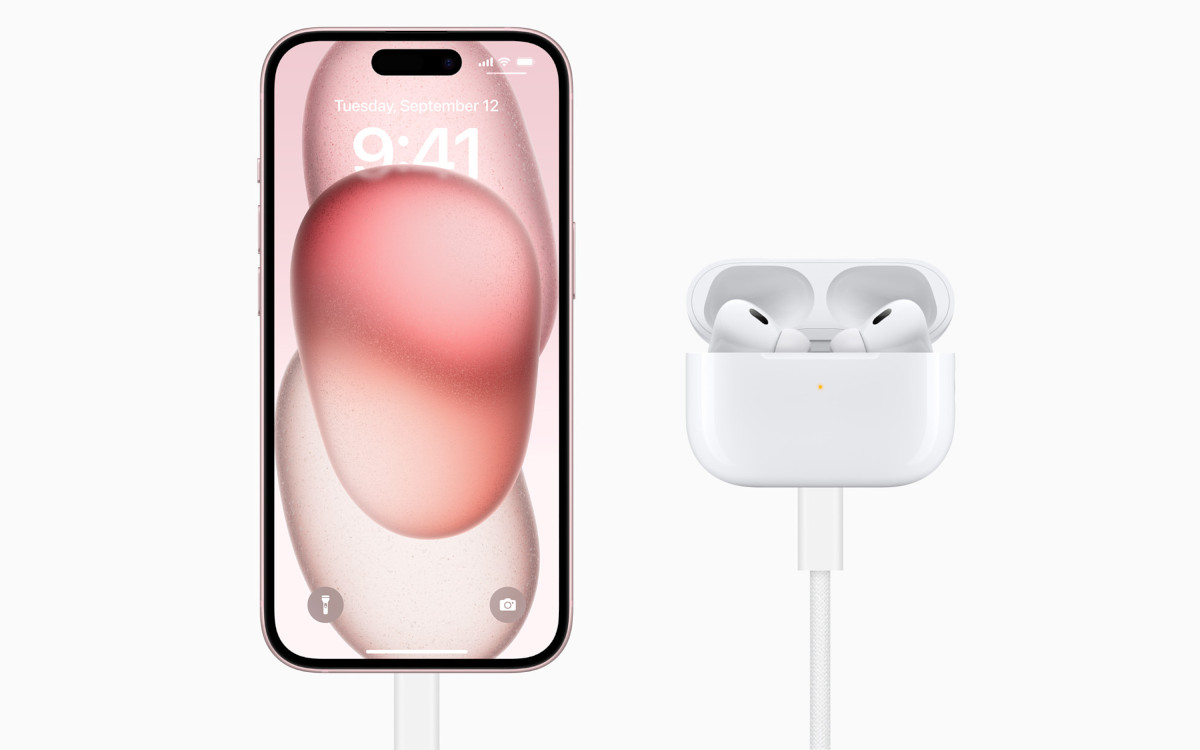As expected, Apple presented its four new smartphones: the iPhone 15, 15 Plus, 15 Pro and 15 Pro Max. Among the changes made, Apple has integrated a USB-C port to comply with European regulations. But Apple didn’t settle for just a simple USB port. What are the real capacities of the port? What are its limitations? What are the differences between wearing iPhone 15 Pro and non-Pro? Let’s do a check in.
That’s it: after months of waiting, the iPhone 15s are finally official. They were announced by Apple during the keynote which was broadcast live this Tuesday, September 12 in the early evening. The range consists, as in 2022, of four models: a classic, a Plus, a Pro and a Pro Max. You can find in our columns a complete file on iPhones, an article which presents the main new features of smartphones, without forgetting presentations on the Apple Watch Series 9 and Apple Watch Ultra 2.
Read also – iOS 17: the 5 best features that will change everything on iPhone
If the non-Pro iPhones benefit from some ergonomic changes, notably the adoption of the iPhone 14 Pro and iPhone 14 Pro Max pill, all models undergo a considerable change: the Lightning port is replaced by a USB-C port. This change is a consequence of European regulations which aim to standardize the connectors of electronic devices. The goal: that you don’t need to buy a charger with all your devices.
The USB-C port on the iPhone 15 is not a USB port like the others
But that was without counting on Apple. The Cupertino company never does things like others. Result: the USB-C used in iPhones is certainly physically identical to that of an Android smartphone, but it does not offer the same advantages. In fact, the port was “customized” by Apple. Which means that it certainly benefits from compatibility with the standard that you certainly already use every day. But there is a catch.

Indeed, some accessories do not fully work with these new iPhones. For a security question and/or a financial question. And those that are compatible are not necessarily entirely compatible. Understand, for example, that any cable can be plugged into an iPhone, but that cable will not provide the same experience, especially in terms of data transfer. This will considerably complicate the decision-making of consumers who will want to equip themselves.
Additionally, the USB-C port on the iPhone 15 Pro and 15 Pro Max is not the same as the other two models. The port of the “Pro” models is USB 3.1 compatible and the port of non-Pro models remained USB 2.0 compatible. The data transmission speed is therefore lower between an iPhone 15 and a MacBook, for example, than between an iPhone 15 Pro Max and the same MacBook. Apple announces that the iPhone 15 Pro is capable of transferring up to 10 Gbps. That’s 20 times the speed of USB 2.0 in the iPhone 15.
USB-C in the iPhone 15: what are the consequences?
This strategy, which is similar to that of Thunderbolt, makes sense for Apple. On the one hand, Apple can pride itself on guaranteeing a “premium experience” to users by certifying the accessories most compatible with its smartphones. And on the other hand, Apple continues to sell “Made For iPhone” licenses to accessories manufacturers who wish to take advantage of all the characteristics offered by smartphones.

The consequence for the consumer is twofold. On the one hand, by purchasing an iPhone 15, you will be able to benefit, to a certain extent, from the entire existing USB-C ecosystem, in particular the cables for charging the phone and transferring data. So you will not have any additional costs. On the other hand, the experience offered by generic accessories will not be optimal. It could even be, depending on the case, degraded. This will particularly be the case for the iPhone 15 Pro Max which will be capable of transferring at only 10 Gb/s with the optional Apple cable. A cable which will obviously have a cost. It will then be up to you to see, as with previous iPhones, if this experience is sufficient on a daily basis or if it is too frustrating.
Note that the arrival of the USB-C port on iPhones does not mean that exchanges with Android smartphones will be made easier. For the moment, if you connect an iPhone 15 with an Android mobile, the result is quite erratic. One will load with the other then vice versa, without logic, and file transfers are impossible. We can hope that this will change in the future.
